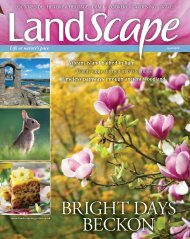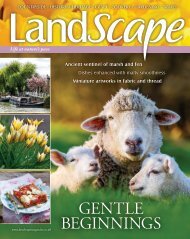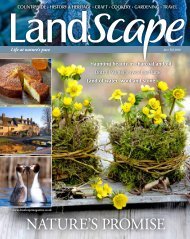Create successful ePaper yourself
Turn your PDF publications into a flip-book with our unique Google optimized e-Paper software.
BIRDING IN<br />
NORTH<br />
MALLORCA<br />
Male Blue Rock Thrush<br />
DID YOU<br />
KNOW…<br />
The Blue Rock Thrush is<br />
actually a chat, or<br />
Old World flycatcher, rather<br />
than a Turdus thrush.<br />
It is found across Europe and<br />
Asia, as far east as Japan and<br />
breeds <strong>in</strong> rock habitats<br />
ID POINTERS<br />
Male can appear black at distance – <strong>in</strong> good<br />
light, shows <strong>in</strong>tense, smoky blue<br />
Female has bluish upperparts (fad<strong>in</strong>g to brown<br />
<strong>in</strong> autumn), but brown, barred underparts<br />
Long w<strong>in</strong>gs and tail, and strong, easy flight style<br />
Spends long periods stationary on sunlit<br />
boulders or cliff ledges<br />
Juveniles are similar to females <strong>in</strong> appearance<br />
Long, dark bill is dist<strong>in</strong>ctive<br />
BLUE ROCK THRUSH<br />
Monticola solitarius<br />
LENGTH 8<strong>in</strong>s (20cm)<br />
WINGSPAN 14-15.5<strong>in</strong>s (35-40cm)<br />
FOOD: Insects and small lizards, plus a few berries.<br />
BREEDING: Lays 4-5 eggs <strong>in</strong> a nest made <strong>in</strong> a hole <strong>in</strong> a rock,<br />
wall, or build<strong>in</strong>g.<br />
If seen <strong>in</strong> silhouette, or at long distance, this gorgeous thrush<br />
can escape notice surpris<strong>in</strong>gly easily. But check every thrush<br />
or Starl<strong>in</strong>g-sized bird <strong>in</strong> likely areas, because a closer look will<br />
reveal the beautiful blue tones that give it its name.<br />
Its song, sometimes delivered <strong>in</strong> a swoop<strong>in</strong>g songflight, but<br />
perhaps more often from a high, rocky perch, is similar to the<br />
Blackbird’s and the Mistle Thrush’s, but with simpler, and<br />
shorter, phrases. Calls <strong>in</strong>clude a high ‘peep’ and a harsher<br />
‘tchuk tchuk’.<br />
IN MALLORCA, LOOK FOR AT…<br />
This resident breeder lives <strong>in</strong> mounta<strong>in</strong>ous regions, so is best<br />
looked for at specific sites (if you want to avoid long walks or<br />
difficult climbs!).<br />
A few pairs can be found <strong>in</strong> the Boquer Valley, while the<br />
Formentor Pen<strong>in</strong>sula is also a great place to look for them. The<br />
Parc Natural de Llevant, on the Arta Pen<strong>in</strong>sula, is another likely<br />
spot for them. Nowhere are numbers high, but it is a relatively<br />
widespread bird, so check prom<strong>in</strong>ent rocky outcrops, cliffs and<br />
old build<strong>in</strong>gs.<br />
WHERE ELSE CAN I SEE IT?<br />
In warm, rocky areas throughout southern Europe – its close<br />
relative, the Rock Thrush, is much more a bird of high meadows.<br />
Resident <strong>in</strong> many areas, while <strong>in</strong> others it disperses to warmer<br />
parts <strong>in</strong> w<strong>in</strong>ter.<br />
Casa at Boquer<br />
MORE INFO<br />
To f<strong>in</strong>d places to eat and<br />
stay next to a beautiful cala<br />
visit enjoymallorca.com/<br />
CalaSantVicenc<br />
6 <strong>Bird<strong>in</strong>g</strong> <strong>in</strong> North <strong>Mallorca</strong>

















